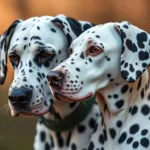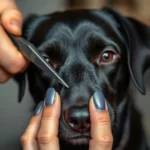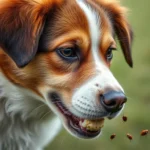
Maintaining your dog’s health is a crucial aspect of responsible pet ownership. Among various health concerns, shedding is a common issue that many dog owners grapple with. Dogs naturally shed their fur, but the extent can vary significantly based on a range of factors. This brings us to a frequently asked question: will shaving a dog help with shedding? To provide clarity on this topic, we’ll delve into the relationship between shaving and shedding, discuss effective grooming practices, and explore alternatives to shaving for managing your dog’s fur.
Understanding Dog Shedding
What is Shedding?
Shedding in dogs refers to the natural process of losing old or damaged fur. This process is essential for maintaining a dog’s coat in optimal condition. Shedding allows for the growth of new hair, which can be healthier and more resilient. The shedding cycle varies by breed, age, and health, making it a unique experience for each dog.
Factors Influencing Shedding
Several factors can influence the amount of shedding a dog experiences:
-
Breed-Specific Shedding Patterns: Certain breeds are known for their heavy shedding, such as Huskies and Golden Retrievers, while others, like Poodles, are considered low-shedding.
-
Seasonal Changes and Environmental Factors: Many dogs shed more during seasonal changes, particularly in spring and fall, when they transition between their winter and summer coats.
-
Age and Health Status of the Dog: Puppies tend to shed less than adult dogs, but as they mature, their shedding patterns may change. Health issues, such as allergies or skin conditions, can also lead to increased shedding.
-
Nutrition and Its Impact on Fur Health: A balanced diet rich in essential nutrients promotes healthy fur and can help reduce shedding. Poor nutrition can lead to weak hair follicles, resulting in excessive fur loss.
The Role of Grooming in Shedding Management
Importance of Regular Grooming
Regular grooming plays a significant role in managing shedding and maintaining overall dog health. Grooming provides numerous benefits, including:
-
Skin Health: Brushing helps distribute natural oils, promoting healthier skin and fur.
-
Circulation: The act of brushing stimulates blood flow, which can lead to healthier skin and fur.
-
Reduction of Loose Hair and Dander: By regularly grooming your dog, you can significantly decrease the amount of loose hair and dander in your home.
Grooming Techniques to Reduce Shedding
To effectively manage shedding, consider adopting these grooming techniques tailored to your dog’s needs:
-
Brushing Frequency and Tools: The frequency of brushing should correspond to your dog’s breed and fur type. Long-haired breeds may need daily brushing, while short-haired breeds may require it only weekly. Utilize tools like slicker brushes, undercoat rakes, and de-shedding tools based on your dog’s coat.
-
Bathing and Its Effects on Fur and Skin Health: Regular baths using suitable dog shampoos can help remove loose fur and dander. However, avoid over-bathing, as it can strip natural oils, leading to dry skin.
-
Professional Grooming Services: For breeds with complex grooming needs, consider visiting a professional groomer. They have the expertise and tools to manage shedding effectively.
Shaving and Its Effects on Shedding
Common Myths about Shaving Dogs
One prevalent myth is that shaving a dog will reduce shedding. In reality, shaving often does not have the desired effect and can lead to other complications. Here are some common misconceptions:
-
Shaving Reduces Shedding: While it may seem logical that removing fur would decrease shedding, dogs typically shed hair from the undercoat, which can still remain even after shaving.
-
Changes in Fur Regrowth and Texture: Many owners believe that shaving will lead to a softer coat upon regrowth. However, shaving can alter the hair’s texture and growth pattern, potentially leading to uneven fur.
When Shaving May Be Appropriate
There are specific instances when shaving may be beneficial for your dog:
-
Health Issues: In certain medical situations, such as skin infections or surgery, shaving may be necessary for treatment.
-
Extreme Heat: Some dogs may benefit from a summer shave to keep cool. It’s essential to consult with a veterinarian or professional groomer to determine if this is suitable for your dog’s breed.
-
Specific Breeds: Breeds like the Maltese or Yorkshire Terrier may require occasional shaving for maintenance, but it’s crucial to know the proper technique to avoid skin damage.
Potential Risks of Shaving
Shaving a dog can come with several risks that owners should be aware of:
-
Skin Irritations and Health Risks: Shaving can lead to cuts, irritations, or even allergic reactions. Thin or sensitive skin may be particularly susceptible to these issues.
-
Impact on Natural Temperature Regulation: A dog’s coat serves as a natural insulator, helping them regulate body temperature. Shaving can disrupt this process, making dogs more vulnerable to heat stress in warm weather and cold in winter.
Alternatives to Shaving for Managing Shedding
Specialized Grooming Tools
Instead of shaving, consider using specialized grooming tools designed to minimize shedding. These tools can effectively reduce loose hair without the risks associated with shaving. Some recommended tools include:
-
De-shedding Tools: Tools like the Furminator can help remove loose undercoat fur.
-
Slicker Brushes: These brushes are excellent for removing mats and tangles while capturing loose hair.
-
Undercoat Rakes: Designed for double-coated breeds, undercoat rakes can help remove excess fur without affecting the topcoat.
Dietary Considerations
A balanced diet is vital for maintaining healthy fur and minimizing shedding. Here are a few dietary considerations:
-
High-Quality Dog Food: Ensure your dog is eating a diet rich in essential fatty acids, proteins, vitamins, and minerals.
-
Supplements: Omega-3 and Omega-6 fatty acids can improve skin and coat health, potentially reducing shedding. Always consult your veterinarian before introducing new supplements to your dog’s diet.
Regular Veterinary Check-ups
Regular veterinary visits are crucial in managing shedding and maintaining your dog’s overall health. A veterinarian can identify underlying health issues contributing to excessive shedding, such as allergies, skin infections, or hormonal imbalances. By addressing these concerns, you can significantly reduce your dog’s shedding without resorting to shaving.
Conclusion
In summary, while the question remains, will shaving a dog help with shedding?, the answer is not straightforward. Shaving is generally not an effective solution for managing shedding and can introduce various risks. Instead, regular grooming, proper nutrition, and veterinary care are key components in maintaining your dog’s coat and minimizing shedding. By adopting these practices, you can ensure your furry friend stays healthy and comfortable, and you can enjoy a cleaner home without excessive fur.
FAQs
Does shaving a double-coated dog help with shedding?
No, shaving a double-coated dog can actually lead to more shedding as the undercoat may become matted and tangled. It’s generally best to groom them regularly instead.
How often should I groom my dog to manage shedding effectively?
The frequency of grooming depends on your dog’s breed and coat type. Long-haired breeds may need daily grooming, while short-haired breeds might only require it weekly.
Are there specific breeds that should never be shaved?
Yes, breeds like Huskies, Golden Retrievers, and other double-coated dogs should not be shaved, as it can disrupt their natural temperature regulation and lead to skin problems.
Can I reduce shedding without shaving?
Absolutely! Regular grooming, a balanced diet, and veterinary check-ups can significantly help in managing shedding.
What should I do if my dog is shedding excessively?
If your dog is shedding more than usual, consult with a veterinarian to rule out potential health issues. Regular grooming and proper nutrition can also help manage shedding.









